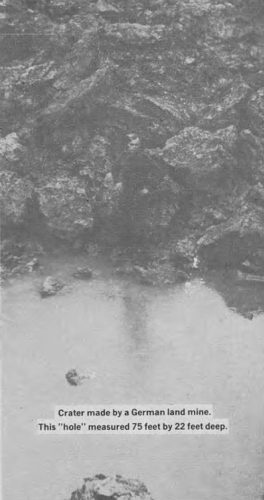- Author
- Goldsworthy, Lieutenant Commander L V GC DSC GM RANVR
- Subjects
- History - general
- Tags
-
- RAN Ships
- None noted.
- Publication
- January 1972 edition of the Naval Historical Review (all rights reserved)
A few feet beneath the surface was the mast of a sunken ship. An underwater inspection revealed the vessel sitting on her side but there was nothing to indicate whether a torpedo, snagline mine, explosive motor boat, drifting mine or a submarine laid influence mine had caused the damage.
Beneath the wreck was an aircraft which had evidently been lying on the seabed when the ship was sunk.

While the search for clues to the ‘mysterious explosion’ continued, tragedy struck nearby. The captain of an ML located a sub-laid mine and manhandled it delicately ashore at Great Yarmouth. Commander Edwards, the local RMSO, a legendary character who had rendered safe vast numbers of enemy moored mines and conical floats, obtained permission from DTM to have a go at it. In the process of stripping the mine, it detonated, killing Edwards and his American observer.
Shortly after the tragedy a similar mine was washed ashore on the same strip of beach. Mouldy was ordered to use all scientific aids in fathoming the mine’s secrets. The author with his mobile dark room and Waldron, a civilian scientist who did the lab X-ray, joined Mouldy.
Waldron also brought a sensitive trepanner. Sensitive listening devices were used to detect a possible clockwork. At one stage it was feared a gamma ray anti-stripping device might be fitted. Both fears proved negative.
Mouldy decided to proceed with a step by step strip. Shadow pictures showed in addition to the normal bits and pieces a canister about midway on the long axis. A very thin wire could be discerned stretched from the canister to the mechanism plate and aft to the main charge.
Was it a booby trip or a self destruction device? If either, how did it work? Was removal of the whole mechanism the trigger? Could the main charge be parted from the body of the mine without risk?
Sooner or later the RMSO arrived at the moment of truth. He must touch or move something. The mine was of the magnetic type but there was no certainty that it was dead magnetically. As a start the mine was gimballed and although very sensitive, the many fingered moving parts were very sluggish.
Eventually, after weighing all the probabilities, Mouldy, step by step, unveiled the ingenuity exercised by the German armourers and the mine that claimed the life of Edwards and his observer was rendered safe.
‘D’ Day and the Build Up With the invasion of Europe drawing nearer, Mouldy was ordered to expand the Section. To do so he scoured all diving services for likely recruits. One to join at this time was the famous Bill Bailey, who won a knife fight against an Italian limpeter on the seabed in Gibraltar.
While Mouldy was busy recruiting, the author was assigned to a beached mine in Scratchell’s Bay, just inside the Needles. The only boat available was ‘Smoky Joe‘, a coal burning harbour picket boat, and the coxswain was a WRN. To reach the locality the coxswain took a short cut from the harbour entrance to Spithead. Passing close to a ship moored fore and aft, they received a verbal blast in no uncertain language. The ship was on the point of testing a one ton depth charge when Smoky Joe entered the target area. The climax of the short voyage came soon after when the coxswain admitted she had never taken a boat outside of harbour and had no idea where Yarmouth was. The voyage was completed in a TB boat which attempted to land the RMSO in a rubber dinghy, but succeeded in dumping him in a boiling surf.
On the Thursday prior to Easter 1944, an American Liberty Ship went aground in Milford Haven, Wales. While setting out kedges to keep the vessel steady until next high water, a mine was seen nose down in the blue clay of the harbour floor. The crew was taken off and the captain was most incensed at being parted from his ship.
The only boat available belonged to a harbour maintenance contractor. It was moored fore and aft by tossing three one hundredweight concrete sinkers over the stern, but when the contractor cheerfully tossed the forward anchor over it disappeared with several fathoms of unsecured chain.




